Nurses play an important role in caring for patients with anxiety by developing individualized nursing care plans that include symptom assessment, emotional support, relaxation techniques, coping education, and promoting overall well-being. These interventions aim to improve the patient’s ability to manage anxiety and enhance their physical and emotional health.
What is Anxiety?
Fear is an automatic neurophysiological state of alarm characterized by a fight or flight response to a cognitive appraisal of present or imminent danger. Anxiety is linked to fear and manifests as a future-oriented mood state that consists of a complex cognitive, affective, physiological, and behavioral response system associated with preparation for the anticipated events or circumstances perceived as threatening (Chand & Marwaha, 2022).
Anxiety disorders are the most common type of psychiatric disorder, according to the American Psychiatric Association (APA). Anxiety disorders are affecting 40 million adults in the United States age 18 and older, or 18% of the population, according to the National Institute of Mental Health. Anxiety disorders have high rates of comorbidity with major depression and alcohol and drug abuse.
Anyone from all walks of life can suffer from anxiety disorders. It affects the poor, the rich, the young, the old, the sick, the healthy, and more. However, everyone experiences anxiety differently. It can be a result of fear, uncertainty, circular and racing thoughts, and the avoidance of certain behaviors. It can affect our ability to function normally, and even convince us that we’re losing our minds. And worst, it can even lead to related psychological conditions, like substance abuse and personality difficulties.
See Also: 7 Anxiety and Panic Disorders Nursing Care Plans »
The reality is that many people struggle with anxiety. Thus, it’s important for healthcare providers and clients to understand what anxiety the client is suffering from and how it affects them. Clients can and do overcome anxiety if they stick with cognitive strategies and practically apply them to their lives.
Causes of Anxiety
Anxiety appears to be caused by an interaction of biopsychosocial factors. Genetic vulnerability interacts with situations that are stressful or traumatic to produce clinically significant syndromes. The following are the causative factors related to anxiety:
- Substance abuse. Substance-induced anxiety disorder caused by over-the-counter medications, herbal medications, or substances of abuse is a diagnosis that is often missed.
- Environmental factors. Environmental factors such as early childhood trauma can also contribute to the risk of late anxiety disorders. Some individuals appear resilient to stress, while others are vulnerable to stress, which precipitates an anxiety disorder.
- Panic disorder. Panic disorder appears to be a genetically inherited neurochemical dysfunction that may involve autonomic imbalance. Some theorize that panic disorder may represent a state of chronic hyperventilation and carbon dioxide receptor hypersensitivity. Some epileptic clients have panic as a manifestation of their seizures.
- Genetic factors. Genetic factors seem to play a role in social and specific phobias. Based on family and twin studies, the risk for social phobia appears to be moderately heritable (Bhatt & Bienenfeld, 2019).
Signs and Symptoms
Anxiety disorders are often underrecognized and undertreated in primary care. Treatment is indicated when a client shows marked distress or suffers from complications resulting from the disorder. Other characteristics of a patient with anxiety may include:
- Palpitations, pounding heart, or accelerated heart rate
- Sweating
- Trembling or shaking
- Shortness of breath or feelings of choking
- Chest pain or discomfort
- Nausea or abdominal distress
- Dizziness, lightheadedness, or faintness
- Chills or heat sensations
- Numbness or tingling sensations
- Derealization (feeling of unreality)
- Depersonalization (feeling of being detached from oneself)
- Fear of losing control or going crazy
- Fear of dying
- Insomnia and restlessness
- Hypervigilance
- Expressed concerns regarding perceived changes
Goals and Outcomes
Anxiety disorders are very common and can present in diverse ways. Because the condition is underdiagnosed and associated with high morbidity, it is best managed by an interprofessional healthcare team. The team will strive for goals and outcomes such as the following;
- The client will demonstrate a decrease in anxiety, as evidenced by reporting fewer intrusive and distressing thoughts and engaging in relaxation techniques when feeling anxious.
- The client will exhibit improved emotional regulation, as evidenced by a reduction in irritability and an increase in adaptive coping strategies to manage anxiety-related emotions.
- The client will experience improved sleep patterns, as evidenced by reporting restful sleep, fewer disruptions, and a decrease in the frequency and intensity of nightmares or sleep-related anxiety.
- The client will demonstrate enhanced social functioning, as evidenced by increased participation in social activities, improved ability to initiate and maintain conversations, and a decrease in avoidance of social situations.
- The client will develop effective coping skills, as evidenced by employing adaptive strategies, such as deep breathing exercises, positive self-talk, and engaging in preferred activities, to manage and reduce anxiety symptoms during times of distress.
Nursing Diagnosis
After thorough assessment, nursing diagnoses are formulated to address the challenges of anxiety, guided by the nurse’s clinical judgment and understanding of the patient’s unique condition. While nursing diagnoses help organize care, their use may vary across clinical settings. Ultimately, the nurse’s expertise and judgment shape the care plan to prioritize each patient’s needs. Here are examples of nursing diagnoses that may be useful for common concerns associated with anxiety:
- Anxiety related to unfamiliar environment and change in routine as evidenced by restlessness, verbalization of nervousness, and increased muscle tension.
- Anxiety related to lack of knowledge about procedures as evidenced by repeated questions, trembling hands, and reports of feeling overwhelmed.
- Anxiety related to change in health status as evidenced by crying, difficulty making decisions, and increased respiratory rate.
Anxiety Nursing Care Plans
Here are some related nursing care plans for anxiety:
- Surgery (Perioperative Client) Nursing Care Plans
- Bronchiolitis & Respiratory Syncytial Virus (RSV) Nursing Care Plans
- Anxiety and Panic Disorders Nursing Care Plans
- Brain Tumor Nursing Care Plans
- Cryptorchidism (Undescended Testes) Nursing Care Plans
- Hospitalized Child Nursing Care Plans
- Mechanical Ventilation & Endotracheal Intubation Nursing Care Plans
- Asthma Nursing Care Plans
- See all care plans related to Anxiety here
Nursing Assessment
As a nurse, conducting assessments for anxiety nursing diagnosis is an essential part of your role. Using tools such as observation, patient interviews, and standardized assessment scales, nurses gather information on the patient’s symptoms and potential triggers. Here are some nursing assessment tips you can use to create an individualized care plan for anxiety:
Assess and recognize patient’s level of anxiety
1. Assess for the presence of culture-bound anxiety states.
The context in which anxiety is experienced, its meaning, and responses to it that are culturally mediated. Culture has a considerable influence on the way in which individuals think, feel, and behave, in organizing people’s everyday lives and how they interact with others, how emotions are felt and expressed in a particular cultural context, and how people should feel in a given situation (Koydemir & Essau, 2018).
2. Assess the client’s level of anxiety. Hildegard E. Peplau described 4 levels of anxiety: mild, moderate, severe, and panic.
The client with mild anxiety will have minimal or no physiological symptoms of anxiety. Vital signs will be within normal ranges. The client will appear calm but may report feelings of nervousness such as “butterflies in the stomach.” The client with moderate anxiety may appear energized, with more animated facial expressions and tone of voice. Vital signs may be normal or slightly elevated. The client may report feeling tense. With severe anxiety, the client will have symptoms of increased autonomic nervous system activity, such as elevated vital signs, diaphoresis, urinary urgency and frequency, dry mouth, and muscle tension. At this stage, the client may experience palpitations and chest pain. The client may be agitated and irritable and report feeling overloaded or overwhelmed by new stimuli. In the panic level of anxiety, the autonomic nervous system increases the level of sympathetic neurotransmitter release. The client becomes pale and hypotensive and experiences poor muscle coordination. The client reports feeling completely out of control and may display extremes of behavior from combativeness to withdrawal.
3. Assess for the influence of cultural beliefs, norms, and values on the client’s perspective of a stressful situation.
What the client considers stressful may be based on cultural perceptions. It is well-known that compared with Westerners, East Asian people are more collectivist in the sense that their needs and feelings are more closely related to others, and perceive themselves as an extension of significant others. It has been argued that differences in the content of fears across cultures are influenced by cultural differences in the child-rearing practices of parents and exposure to specific fear-provoking stimuli (Koydemir & Essau, 2018).
4. Assess physical reactions to anxiety.
Anxiety also plays a role in somatoform disorders, which are characterized by physical symptoms such as pain, nausea, weakness, or dizziness that have no apparent physical cause. Because anxiety manifests with a number of physical symptoms, any client who presents with a new complaint of physical symptoms suggesting an anxiety disorder should have a physical examination and basic laboratory workup to rule out medical conditions that might present with anxiety-like symptoms (Bhatt & Bienenfeld, 2019).
5. Validate observations by asking the client, “Are you feeling anxious now?”
Anxiety is a highly individualized, normal physical and psychological response to internal or external life events. Support may enable the client to begin exploring and dealing with the situation. The client may also need time to identify feelings and even more time to begin to express them.
6. Use the State-Trait Anxiety Inventory (STAI) to differentiate between the client’s anxiety level as a temporary response state and a long-standing personality trait.
The State-Trait Anxiety Inventory, developed by Spielberger, is considered a definitive tool for measuring anxiety in adults. The tool is written at the sixth-grade reading level and is available in more than 40 languages. STAI is the gold standard for measuring preoperative anxiety. Its reliability and validity are well reported. The trait scale consists of 20 statements that ask people to describe how they generally feel. The state scale can be used to determine the actual levels of anxiety intensity induced by stressful procedures (Karger, 2017).
Determine patient’s coping mechanisms for anxiety
7. Observe how the client uses coping techniques and defense mechanisms to cope with anxiety.
Asking questions requiring informative answers helps identify the effectiveness of coping strategies currently used by the client. This approach may help empower the client by making them contribute to their care. Coping strategies may include reading, journaling, or physical activity such as taking a walk. Defense mechanisms are used by people to preserve the ego and manage anxiety. Some defense mechanisms are highly adaptive in managing anxiety, such as humor, sublimation, or suppression. Other defense mechanisms may lead to less adaptive behavior, especially with long-term use. These defense mechanisms include displacement, repression, denial, projection, and self-image splitting.
8. Evaluate for suicidal and homicidal risk.
Suicidal ideation should be assessed by asking about passive thoughts of death, desires to be dead, thoughts of harming self, or plans or acts to harm self. Homicidal ideation is uncommon. Thought content is particularly important to specifically assess in order to ensure the client has no suicidal or homicidal thoughts. Acute anxiety, as a form of acute mental anguish, can lead to unsafe or self-injurious behavior (Bhatt & Bienenfeld, 2019).
Assess for presence of fear
9. Determine the type of the patient’s fear by thorough, rational questioning and active listening.
The external cause of fear can be known. Patients who find it unacceptable to expose fear may find it convenient to know that someone is willing to listen if they choose to share their feelings at some time in the future.
10. Assess the behavioral and verbal expression of fear.
This information provides a foundation for planning interventions to support the patient’s coping strategies.
11. Evaluate the measures the patient practices to cope with that fear.
This information helps determine the effectiveness of coping strategies used by the patient.
12. Learn to what extent the patient’s fears may be influencing his or her ability to function.
Anti-anxiety medications or referral to specially designed treatment programs is necessary for persistent, immobilizing fears. Patient safety must always be a priority.
Nursing Interventions and Rationales
As a nurse, one of the key components of caring for patients with anxiety is implementing nursing interventions. These interventions are designed to address the patient’s symptoms and promote relaxation, coping, and overall well-being.
1. Recognize awareness of the client’s anxiety.
Since a cause of anxiety cannot always be identified, the client may feel as though the feelings being experienced are counterfeit. Acknowledgment of the client’s feelings validates the feelings and communicates acceptance of those feelings. Fear and anxiety will diminish as the client begins to accept and deal positively with reality. This is an indicator of the client’s readiness to accept responsibility for participation in recovery and to “resume life”.
2. Use presence, touch (with permission), verbalization, and demeanor to remind clients that they are not alone and to encourage expression or clarification of needs, concerns, unknowns, and questions.
Being supportive and approachable promotes therapeutic communication. Interaction time with the nurse is essential for clients with anxiety to feel that they are not alone, with no reasons for them to experience that condition, and help them deal with anxiety. Interview techniques may be utilized to build rapport. The use of therapeutic communication techniques makes it easier for the client to express feelings, understand their needs, incorporate interventions to meet those needs, and guide the client toward identifying a plan of action that can lead to a satisfying and socially appropriate resolution (Cacayan et al., 2021).
3. Familiarize the client with the environment and new experiences or people as needed.
Awareness of the environment promotes comfort and may decrease the anxiety experienced by the client. Anxiety may intensify to a panic level if the client feels threatened and unable to control environmental stimuli. The lighting, temperature, sounds, smells, and color palette of an environment are very important to how comfortable, relaxed, and safe the client feels. Indirect or inconsistent communication, conflicts, and unreliable people in the environment can also be very stressful to manage (Lindberg, 2023).
4. Interact with the client in a peaceful manner.
The nurse or health care provider can transmit his or her own anxiety to the hypersensitive client. The client’s feeling of stability increases in a calm and non-threatening environment. Based on data analysis, nurses’ attitudes or behaviors matter when interacting with a client with anxiety. It is a huge factor in establishing rapport with the client in gaining cooperation during treatment, and care, providing interventions, and helping clients deal with their anxiety (Cacayan et al., 2021).
5. Accept the client’s defenses; do not dare, argue, or debate.
If defenses are not threatened, the client may feel secure and protected enough to look at behavior. Sometimes it is necessary to acknowledge what the client says and affirm that they have been heard. Acceptance is not necessarily the same thing as agreement; it can be enough to simply make eye contact and let the client know that they are understood. Clients who feel their nurses are listening to them and taking them seriously are more likely to be receptive to care (Rivier University, 2023).
6. Converse using simple language and brief statements.
When experiencing moderate to severe anxiety, clients may be unable to understand anything more than simple, clear, and brief instructions. Because of the shock of the initial trauma, many people may not recall the information provided during that time. Providing frequent and understandable explanations may reduce the client’s fear and anxiety, clarifies misconceptions, and promotes cooperation.
7. Reinforce the client’s personal reaction to or expression of pain, discomfort, or threats to well-being (e.g., talking, crying, walking, and other physical or nonverbal expressions).
Talking or otherwise expressing feelings sometimes reduces anxiety. By using nonverbal cues such as nodding and saying “I see”, the nurse can encourage the client to continue talking. Active listening involves showing interest in what the client has to say, acknowledging that you are listening and understanding, and engaging with them throughout the conversation (Rivier University, 2023).
8. Lessen sensory stimuli by keeping a quiet and peaceful environment; keep “threatening” equipment out of sight.
Anxiety may intensify to a panic state with excessive conversations, noise, and equipment around the client. increasing anxiety may become frightening to the client and others. Harsh lighting and loud noises can lead to anxiety or agitation, while dark and cold spaces can lead to feeling unmotivated, especially in the winter. Cluttered spaces can also overwhelm the client and create feelings of anxiety (Lindberg, 2023).
9. Allow the client to talk about anxious feelings and examine anxiety-provoking situations if they are identifiable.
Talking about anxiety-producing situations and anxious feelings can help the client perceive the situation realistically and recognize the factors leading to anxious feelings. Clients often ask nurses for advice about what they should do about particular problems or specific situations. The nurse can ask the client what they think they should do, which encourages the client to be accountable for their own actions and helps them come up with solutions themselves (Rivier University, 2023).
10. If the situational response is rational, use empathy to encourage the client to interpret the anxiety symptoms as normal.
Anxiety is a normal response to actual or perceived danger. Be empathetic and nonjudgemental in dealing with the client and family. Family relationships are disrupted; financial, lifestyle, and role changes make this a difficult time for those involved with the client, and they may react in many different ways.
11. Recommend client to keep a log of episodes of anxiety. Instruct the client to describe what is experienced and the events leading up to and surrounding the event. The client should note how the anxiety dissipates.
Recognition and exploration of factors leading to or reducing anxious feelings are essential steps in developing alternative responses. The client may be unaware of the relationship between emotional concerns and anxiety. If the client is comfortable with the idea, the log may be shared with the healthcare provider, who may help the client develop more effective coping strategies. Symptoms often provide the healthcare provider with information regarding the degree of anxiety being experienced.
12. Encourage the client to consider positive self-talk like “Anxiety won’t harm me,” “I can take this step by step,” “I need to breathe and stretch right now,” and “I don’t have to be perfect” can be helpful in calming the patient and reducing their anxiety.
Cognitive therapies focus on changing behaviors and feelings by changing thoughts. Replacing negative self-statements with positive self-statements aids to reduce anxiety. Within the client-centered armamentarium is awareness of and openness to understanding each individual and his or her uniqueness within the context of that person’s life experience and attention to the influence of biopsychosocial and developmental risk and resilience factors. Clients are more satisfied when they feel they have agency or control over treatment decisions (Stubbe, 2017).
13. Consider the client’s use of coping strategies that the client has found effective in the past.
This enhances the client’s sense of personal mastery and confidence. This also focuses attention on the client’s own capabilities, increasing their sense of control. During stressful life events, it is important to pay attention to the increasing levels of health anxiety and to the kind of coping mechanisms that are potential factors to mitigate the effects of high anxiety (Garboczy et al., 2021).
14. Avoid unnecessary reassurance; this may increase undue worry.
Reassurance is not helpful for the anxious individual. Reassurance attempts to dispel the anxiety of the client by implying that there is no sufficient reason for it to devalue the client’s judgment and communicates the nurse’s lack of empathy and understanding.
15. Assist the client in developing new anxiety-reducing skills (e.g., relaxation, deep breathing, positive visualization, and reassuring self-statements).
Discovering new coping methods provides the client with various ways to manage anxiety. Relaxation techniques provided by nurses help the clients divert their attention to other things that will make them feel at ease, change their mindset into a positive one, control thinking, and manage their emotions, especially fear, sadness, and overthinking about their condition. Additionally, the nurse may guide the client through these techniques to refocus their perception of their situation (Cacayan et al., 2021).
16. Intervene when possible to eliminate sources of anxiety.
Anxiety is a normal response to actual or perceived danger; if the threat is eliminated, the response will stop. In experimental settings, symptoms can be elicited in people with panic disorders by hyperventilation, inhalation of carbon dioxide, caffeine consumption, or intravenous infusions of hypertonic sodium lactate or hypertonic saline. Removing these triggers may lead to a reduction in the client’s anxiety and panic attacks (Bhatt & Bienenfeld, 2019).
17. Assist the client in strengthening problem-solving abilities. Highlight the logical strategies that the client can use when experiencing anxious feelings.
Learning to identify a problem and evaluate the alternatives to resolve that problem helps the client cope. Problem-focused coping strategies help an individual to be able to endure and/or minimize the threat, targeting the causes of stress in practical ways (Garboczy et al., 2021).
18. Explain all activities, procedures, and issues that involve the client; use non medical terms and calm, slow speech. Do this in advance of procedures when possible, and validate the client’s understanding.
With preadmission client education, clients experience less anxiety and emotional distress and have increased coping skills because they know what to expect. Uncertainty and lack of predictability contribute to anxiety. Informed and empowered clients participate with the healthcare team in exploring options for overcoming disease and establishing the conditions for maximizing health consistent with their own socio cultural frame of reference (Stubbe, 2017).
Administering anxiolytics and providing pharmacological support
19. Instruct the client on the appropriate use of antianxiety medications.
Short-term use of antianxiety medications can enhance client coping and reduce physiological manifestations of anxiety. Clients with significant discomfort from their anxiety can benefit from emergency anxiolytic treatment, primarily with a benzodiazepine. For clients with more severe anxiety, a short course of a fast-acting anxiolytic agent is recommended (Bhatt & Bienenfeld, 2019).
- 19.1. Benzodiazepines. Drugs in this group work by enhancing the action of the inhibitory neurotransmitter gamma-aminobutyric acid (GABA). These drugs are recommended for short-term use, not to exceed three to four months. Physical dependence and tolerance are problems associated with prolonged use of these drugs. Benzodiazepines are often used with antidepressants as an adjunct treatment. They are especially useful in the management of acute situational anxiety disorder and adjustment disorder (Bhatt & Bienenfeld, 2019).
- 19.2. Buspirone HCl (BuSpar). This drug has fewer side effects and less risk for dependence than benzodiazepines. Buspirone is an antianxiety drug that is non-sedating and unrelated to benzodiazepines, barbiturates, and other sedative-hypnotics. The drug has a slower onset of action and may take one to two weeks to produce a noticeable therapeutic effect. It has been found to be comparable to benzodiazepines in reducing symptoms of anxiety and has fewer sedative or withdrawal adverse effects (Bhatt & Bienenfeld, 2019).
- 19.3. Selective serotonin reuptake inhibitors (SSRIs). Several drugs in this group have been approved by the Food and Drug Administration (FDA) for use in the management of panic disorder. Their use in the treatment of other types of anxiety is being investigated. SSRIs are first-line agents for the long-term management of anxiety disorders, with control gradually achieved over a 2 to 4-week course. Fluoxetine has a very long half-life, making it well-suited for clients who have difficulty remembering to take all of their medications each day (Bhatt & Bienenfeld, 2019).
- 19.4. Nonselective beta-blockers and alpha-2-receptor agonists. Beta-blockers are effective in managing the physical symptoms of anxiety that occur with social phobias (e.g., stage fright). The alpha-2 agonists are used to manage anxiety associated with withdrawal from nicotine and opioids. A pilot study revealed propranolol is effective in decreasing physiological signs of hyperarousal for up to one week when used shortly after clients with PTSD re-experience their traumatic event (Bhatt & Bienenfeld, 2019).
Providing nonpharmacologic support for anxiety
20. Instruct the client to limit the use of central nervous system stimulants.
Stimulants (e.g., caffeine, nicotine, theophylline, terbutaline sulfate, amphetamines, and cocaine) can increase physical symptoms of anxiety. Caffeine-containing products, such as coffee, tea, and colas, should be discontinued or at least decreased to a low reasonable level. Over-the-counter preparations and herbal remedies should be reviewed with special caution because ephedrine and other herbal compounds may precipitate or exacerbate anxiety symptoms (Bhatt & Bienenfeld, 2019).
21. Provide massage and backrubs for the client to reduce anxiety.
This aids in the reduction of anxiety. Progressive muscle relaxation is a relaxation technique targeting the symptom of tension associated with anxiety. The exercise involves tensing and releasing muscles, progressing throughout the body, with the focus on the release of the muscle as the relaxation phase. Progressive muscle relaxation can be practiced individually or with the support of a narrator (Norelli et al., 2022).
22. Provide the client with a means to listen to the music of their choice.
Music is a simple, inexpensive, aesthetically pleasing means of alleviating anxiety. It is important to note that music therapy is not equal to music medicine. Music medicine was mostly offered by medical professionals or they simply ask the client to wear headphones and listen to their favorite music. In contrast, music therapy uses various components of music, such as melody, timbre, rhythm, harmony, and pitch, to support and enhance physical, psychological, and social well-being by building a therapeutic relationship between the participant and the therapist (Lu et al., 2021).
23. Rule out withdrawal from alcohol, sedatives, or smoking as the cause of anxiety.
Withdrawal from these substances is characterized by anxiety. Prior to medication treatment, testing should be ordered for drugs of abuse, pregnancy, and screening tests for diabetes mellitus. Anxiety disorders have one of the longest differential diagnosis lists of all psychiatric disorders. Anxiety can be observed as part of a drug withdrawal or drug intoxication effect (Bhatt & Bienenfeld, 2019).
Initiating health teachings to promote effective coping to manage anxiety
24. Educate the client and family about the symptoms of anxiety.
If the client and family can identify anxious responses, they can intervene earlier than otherwise. Family members should receive information about the effect of anxiety disorders on mood, behavior, and relationships. Family members may also assist by providing a collaborative resource for monitoring the severity of the client’s anxiety symptoms and response to treatment interventions (Bhatt & Bienenfeld, 2019).
25. Teach the client to visualize or fantasize about the absence of anxiety or pain, successful experience of the situation, resolution of conflict, or outcome of the procedure.
The use of guided imagery has been helpful in reducing anxiety. Guided imagery is a relaxation exercise intended to assist clients with visualizing a calming environment. Visualization of tranquil settings assists clients in managing stress via distraction from intrusive thoughts, therefore, if intrusive thoughts can be managed, the emotional consequences are more manageable. Imagery employs all five senses to create a deeper sense of relaxation (Norelli et al., 2022).
26. Teach the use of appropriate community resources in emergency situations (e.g., suicidal thoughts), such as hotlines, emergency rooms, law enforcement, and judicial systems.
The method of suicide prevention found to be most effective is a systematic, direct-screening procedure that has a high potential for institutionalization. Suicide attempts can be precipitated by adverse life events such as divorce or financial disaster. The effects of acute stress in producing suicidal behavior are increased in those with underlying mood, anxiety, and substance abuse problems (Bhatt & Bienenfeld, 2019).
27. Educate about and assist the client with box breathing.
Box breathing can be particularly helpful with relaxation. Box breathing is a breathing exercise to assist clients with stress management and can be implemented before, during, and/or after stressful experiences. Box breathing uses four simple steps. Its title is intended to help the client visualize a box with four equal sides as they perform the exercise. The client should first breathe in through the nose for a count of four, then hold his breath for a count of four. The client may then breathe out for a count of 4 and lastly, hold breath for a count of four (Norelli et al., 2022).
28. Provide information regarding psychotherapy.
Cognitive and behavioral psychotherapy can be used alone or in addition to pharmacotherapy. The combination approach yields superior results for most clients compared to either single modality. Cognitive therapy helps the client understand how automatic thoughts and false beliefs/distortions lead to exaggerated emotional responses, such as anxiety, and can lead to secondary behavioral consequences. Behavioral therapy involves sequentially greater exposure of the client to anxiety-provoking stimuli; over time, the client becomes desensitized to the experience (Bhatt & Bienenfeld, 2019).
29. Arrange referrals or consultations with a psychiatrist, psychologist, and other medical professionals.
Consultation with a psychiatrist is helpful to initiate longer-term therapy and to provide follow-up planning. Longer-term therapy currently consists of SSRIs, often with additional psychotherapeutic techniques. Psychology consultation and testing are indicated if cognitive impairment is of concern or if the client may be a candidate for cognitive-behavioral therapy. In anxiety disorders secondary to a general medical condition, specialty consultation may be indicated (Bhatt & Bienenfeld, 2019).
30. Ensure the client’s safety during panic-level anxiety.
During panic-level anxiety, the client’s safety is the primary concern. The client cannot perceive potential harm and may have no capacity for rational thought. The nurse must keep talking to the person in a comforting manner, even though the client cannot process what the nurse is saying. Going to a small, quiet, and non-stimulating environment may help reduce anxiety. The nurse should remain with the client until the panic recedes because panic-level anxiety can only last from 5 to 30 minutes (Videbeck, 2018).
31. Be aware of your own feelings and level of discomfort.
Anxiety is communicated interpersonally. Being with an anxious client can raise the nurse’s own anxiety level. Remaining calm and in control is essential if the nurse is going to work effectively with the client (Videbeck, 2018).
32. Reduce or eliminate problematic coping mechanisms.
Denial can be an effective defense mechanism when the situation is too stressful to cope with. However, when the client uses denial as a coping mechanism too much, it may affect the client’s perspective of reality. The nurse should develop an atmosphere of empathic understanding while focusing on the present situation by giving feedback about current reality. The nurse may also have the client describe events in detail and focus on the specifics of who, what, when, and where to reinforce reality (Carpenito, 2013).
33. Provide information about the benefits of mindfulness meditation.
Mindfulness meditation is successful in mediating anxiety. Meditation analyses indicated that mindfulness fully mediated changes in acute anxiety symptoms and partially mediated changes in worry and trait anxiety. These researchers concluded that mindful-based stress reduction exercises are an effective treatment for anxiety disorders and related symptoms (Makic et al., 2017).
Initiating interventions to control/manage fear
1. Open up about your awareness of the patient’s fear.
This approach validates the feelings the patient is holding and demonstrates recognition of those feelings.
2. Discuss the situation with the patient and help differentiate between real and imagined threats to well-being.
This approach helps the patient deal with fear.
3. Tell the patient that fear is a normal and appropriate response to circumstances in which pain, danger, or loss of control is anticipated or felt.
This reassurance places fear within the field of normal human experiences.
4. Be with the patient to promote safety, especially during frightening procedures or treatment.
The physical connection with a trusted person helps the patient feel secure and safe during a period of fear.
5. Maintain a relaxed and accepting demeanor while communicating with the patient.
The patient’s feeling of stability increases in a peaceful and non-threatening environment.
6. Familiarize the patient with the surroundings as necessary.
Familiarity with the setting promotes comfort and a decrease in fear.
7. Provide accurate information if irrational fears based on incorrect information are present.
Replacing inaccurate beliefs with accurate information reduces anxiety.
8. If the patient’s fear is a reasonable response, empathize with him or her. Avoid false reassurances and be truthful.
Reassure patients that asking for help is both a sign of strength and a step toward the resolution of the problem.
9. Use simple language and easy-to-understand statements regarding diagnostic procedures.
The patient may find it hard to understand any given explanations during excessive fear. Simple, clear, and brief instructions are necessary.
10. Maintain a quiet environment whether at home or in a hospital setting. Drop any unnecessary stuff around the patient.
The patient’s fear is not reduced and resolved if the environment is unsafe.
11. Provide safety measures within the home when indicated (e.g., alarm system, safety devices in showers or bathtubs).
The patient’s fear will not be reduced or resolved if the home environment is unsafe.
12. Support the patient in recognizing strategies used in the past to deal with fearful situations.
This method allows the patient to think that fear is a natural part of life and can be dealt with successfully.
13. As the fear subsides, encourage the patient to be involved in specific events preceding the onset of the fear.
Recognition and explanation of factors leading to fear are vital in developing alternative responses.
14. Allow the patient to have rest periods.
Relaxation improves the ability to cope. The nurse needs to pace activities, especially for older adults to conserve the patient’s energy.
15. Suggest the patient bring comforting objects when away from home.
This method can enhance feelings of security in a new environment.
16. Access community resources to meet the fearful needs of the patient and family (e.g., spiritual counselor, social worker).
Appropriate resources render organized and regulated patient care that indicates supportive healthcare service.
17. Initiate alternative treatments. Provide verbal and nonverbal (touch and hug with permission) reassurances of safety if safety is within control.
Meditation, prayer, music, Therapeutic Touch, and healing touch techniques help lighten fear.
18. Refer to cognitive behavioral group therapy.
A reward that comes from participating in a group is the opportunity to meet others with the same problem. Even if not everyone will have the same triggers or severity of symptoms, it is helpful to know that the patient realizes that he or she is not alone.
Recommended Resources
Recommended nursing diagnosis and nursing care plan books and resources.
Disclosure: Included below are affiliate links from Amazon at no additional cost from you. We may earn a small commission from your purchase. For more information, check out our privacy policy.
Ackley and Ladwig’s Nursing Diagnosis Handbook: An Evidence-Based Guide to Planning Care
We love this book because of its evidence-based approach to nursing interventions. This care plan handbook uses an easy, three-step system to guide you through client assessment, nursing diagnosis, and care planning. Includes step-by-step instructions showing how to implement care and evaluate outcomes, and help you build skills in diagnostic reasoning and critical thinking.

Nursing Care Plans – Nursing Diagnosis & Intervention (10th Edition)
Includes over two hundred care plans that reflect the most recent evidence-based guidelines. New to this edition are ICNP diagnoses, care plans on LGBTQ health issues, and on electrolytes and acid-base balance.

Nurse’s Pocket Guide: Diagnoses, Prioritized Interventions, and Rationales
Quick-reference tool includes all you need to identify the correct diagnoses for efficient patient care planning. The sixteenth edition includes the most recent nursing diagnoses and interventions and an alphabetized listing of nursing diagnoses covering more than 400 disorders.

Nursing Diagnosis Manual: Planning, Individualizing, and Documenting Client Care
Identify interventions to plan, individualize, and document care for more than 800 diseases and disorders. Only in the Nursing Diagnosis Manual will you find for each diagnosis subjectively and objectively – sample clinical applications, prioritized action/interventions with rationales – a documentation section, and much more!

All-in-One Nursing Care Planning Resource – E-Book: Medical-Surgical, Pediatric, Maternity, and Psychiatric-Mental Health
Includes over 100 care plans for medical-surgical, maternity/OB, pediatrics, and psychiatric and mental health. Interprofessional “patient problems” focus familiarizes you with how to speak to patients.

See also
Other recommended site resources for this nursing care plan:
- Nursing Care Plans (NCP): Ultimate Guide and Database MUST READ!
Over 150+ nursing care plans for different diseases and conditions. Includes our easy-to-follow guide on how to create nursing care plans from scratch. - Nursing Diagnosis Guide and List: All You Need to Know to Master Diagnosing
Our comprehensive guide on how to create and write diagnostic labels. Includes detailed nursing care plan guides for common nursing diagnostic labels.
References
Here are some references and sources you can use to further your research about management and care for patients with anxiety:
- Bhatt, N. V., & Bienenfeld, D. (2019, March 27). Anxiety Disorders: Background, Anatomy, Pathophysiology. Medscape Reference. Retrieved February 25, 2023.
- Cacayan, E. B., Alvarado, A. E., Esmundo, O. A., Dela Cruz, A. C., Felix, F. C., Franco, D. S., & Galimba, J. M. D. (2021, July). Nursing Therapyin Dealing with Anxiety of COVID-19 PatientsBased on the Model of Interspersonal Relations of Hildegard Peplau. Health Notions, 5(7).
- Chand, S. P., & Marwaha, R. (2022, May 8). Anxiety – StatPearls. NCBI. Retrieved February 25, 2023.
- Doenges, M. E., Moorhouse, M. F., & Murr, A. C. (2010). Nursing Care Plans: Guidelines for Individualizing Client Care Across the Life Span. F.A. Davis Company.
- Garboczy, S., Szeman-Nagy, A., Ahmad, M. S., Harsanyi, S., Ocsenas, D., Rekenyi, V., Al-Tammemi, A. B., & Kolozsvari, L. R. (2021). Health anxiety, perceived stress, and coping styles in the shadow of the COVID-19. BMC Pscyhology, 9(53).
- Karger, S. (2017, August 5). State and Trait Anxiety Scores of Patients Receiving Intravitreal Injections. NCBI. Retrieved February 25, 2023.
- Koydemir, S., & Essau, C. A. (2018). Anxiety and Anxiety Disorders in Young People: A Cross-Cultural Perspective. Understanding Uniqueness and Diversity in Child and Adolescent Mental Health.
- Lindberg, S. (2023, January 24). How Your Environment Affects Your Mental Health. Verywell Mind. Retrieved February 25, 2023.
- Lu, G., Jia, R., Liang, D., Yu, J., Wu, Z., & Chen, C. (2021, October). Effects of music therapy on anxiety: A meta-analysis of randomized controlled trials. Psychiatry Research, 304.
- Norelli, S. K., Long, A., & Krepps, J. M. (2022, August 29). Relaxation Techniques – StatPearls. NCBI. Retrieved February 25, 2023.
- Rivier University. (2023). 17 Therapeutic Communication Techniques – Rivier Academics. Rivier University. Retrieved February 25, 2023.
- Stubbe, D. E. (2017, April 6). Alleviating Anxiety: Optimizing Communication With the Anxious Patient. NCBI. Retrieved February 25, 2023.
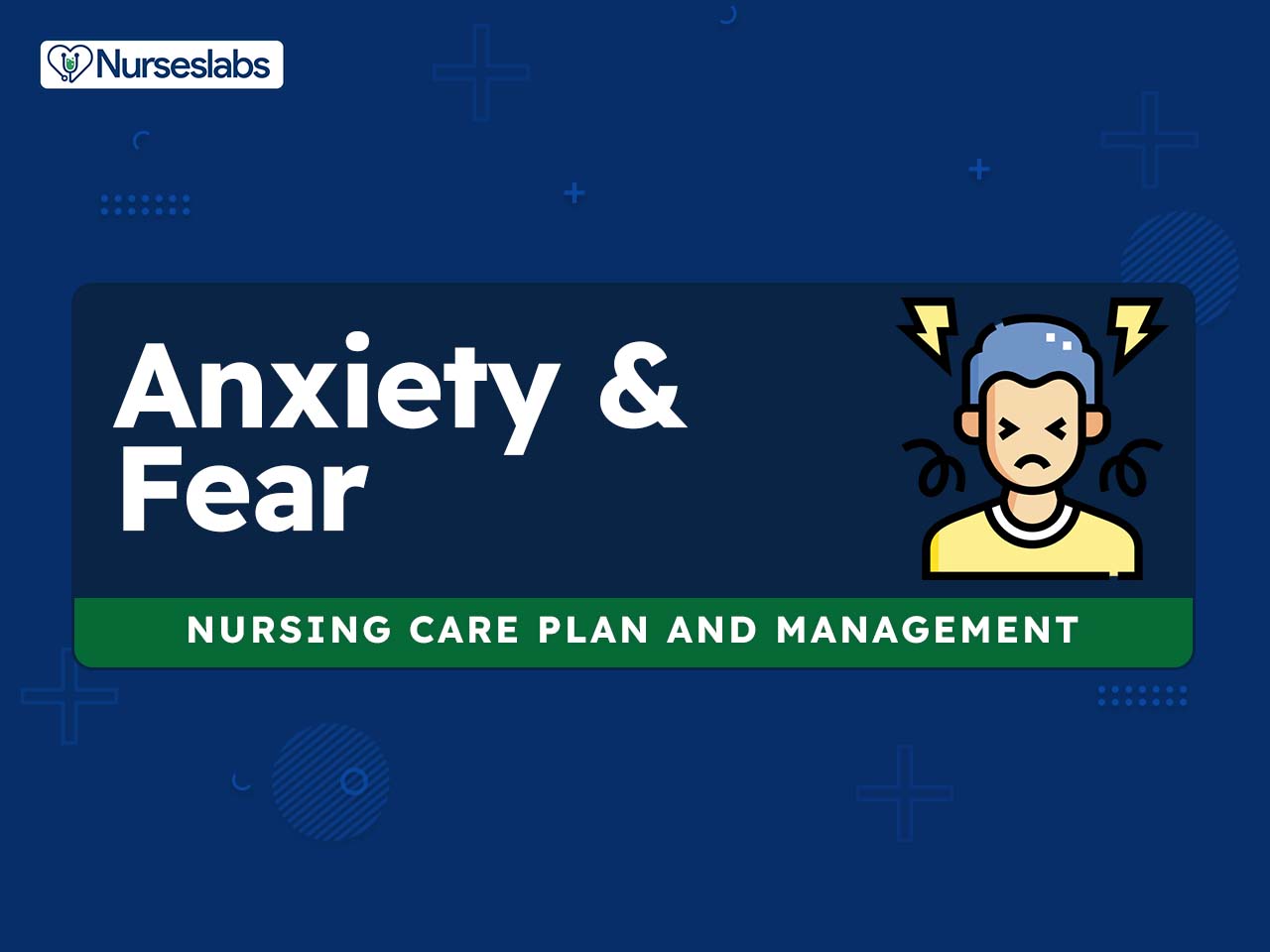




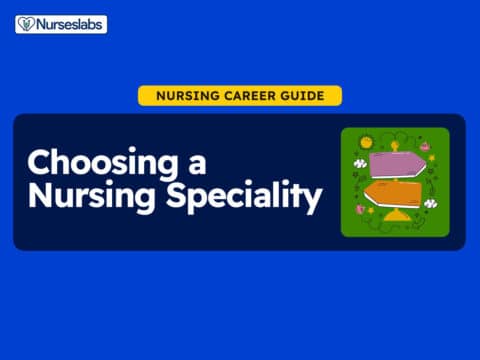










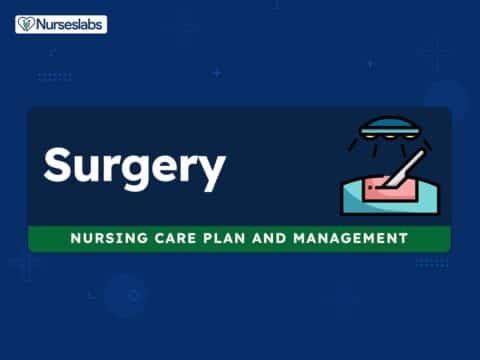

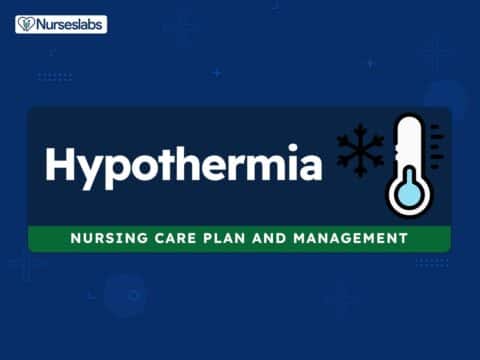
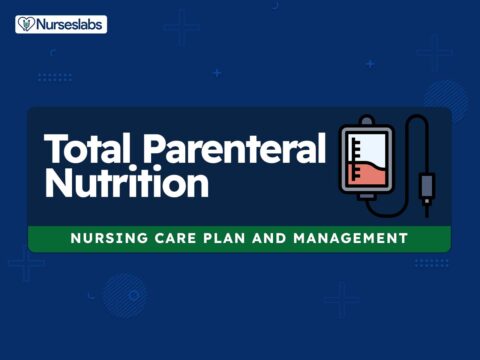
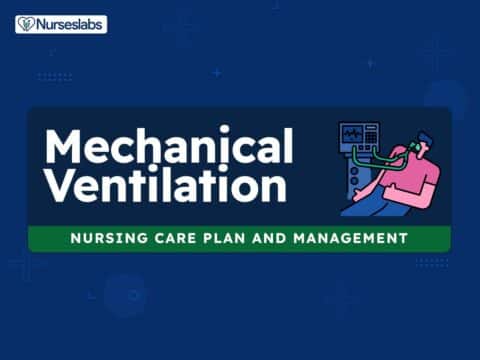
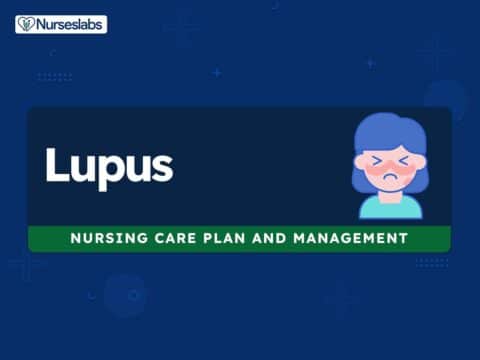

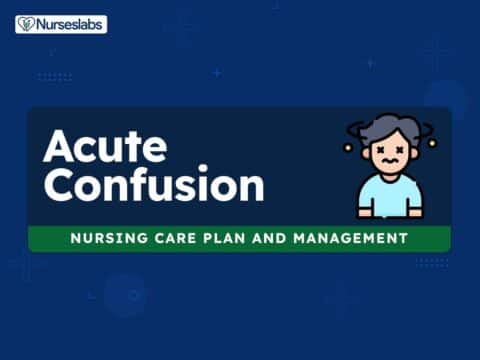

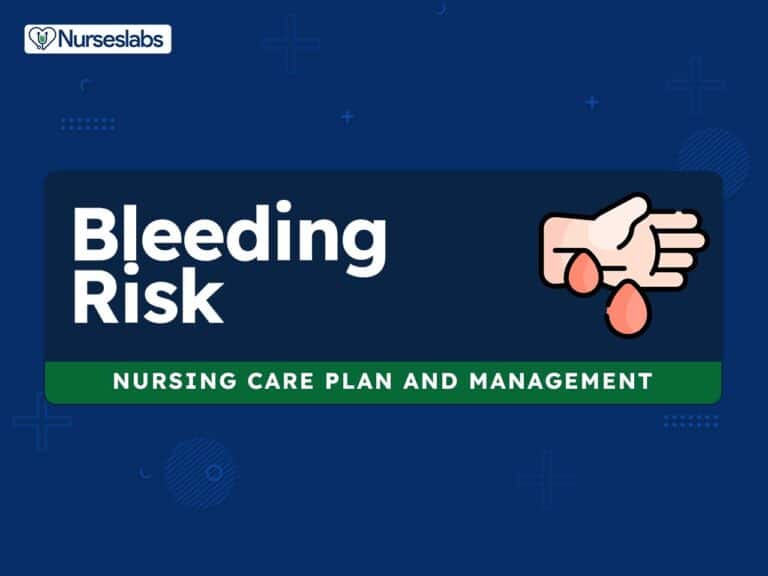


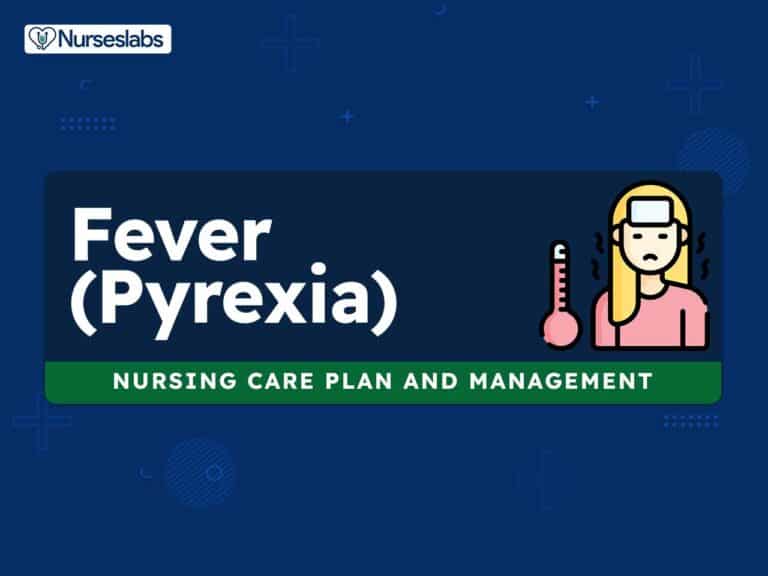

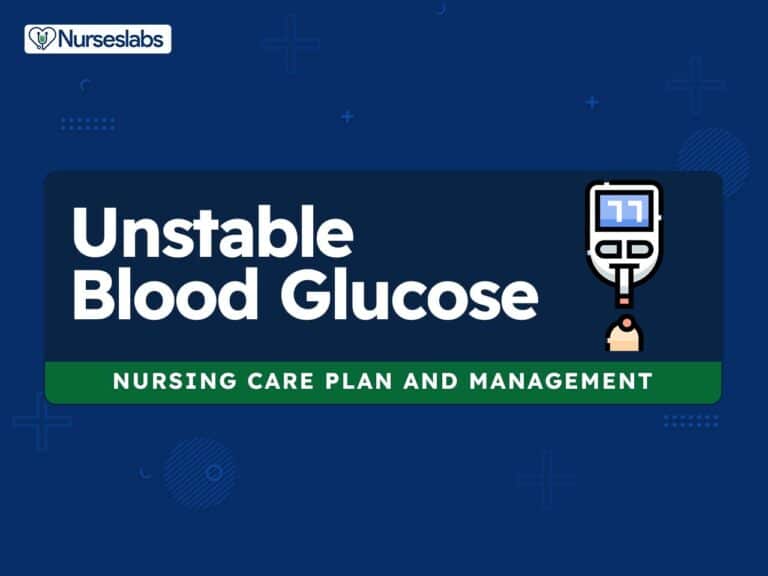

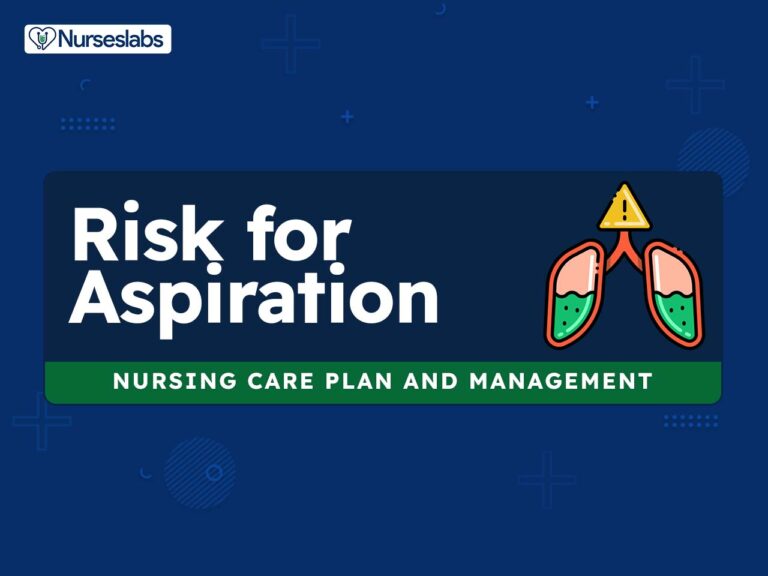
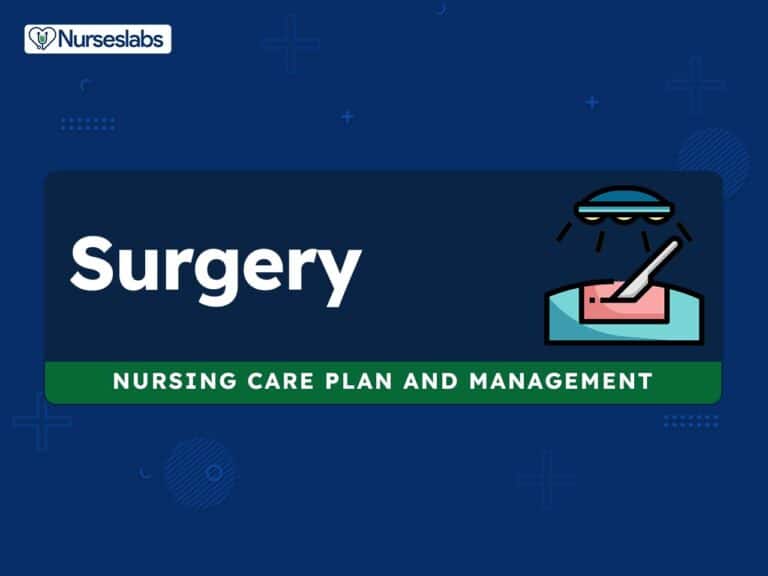

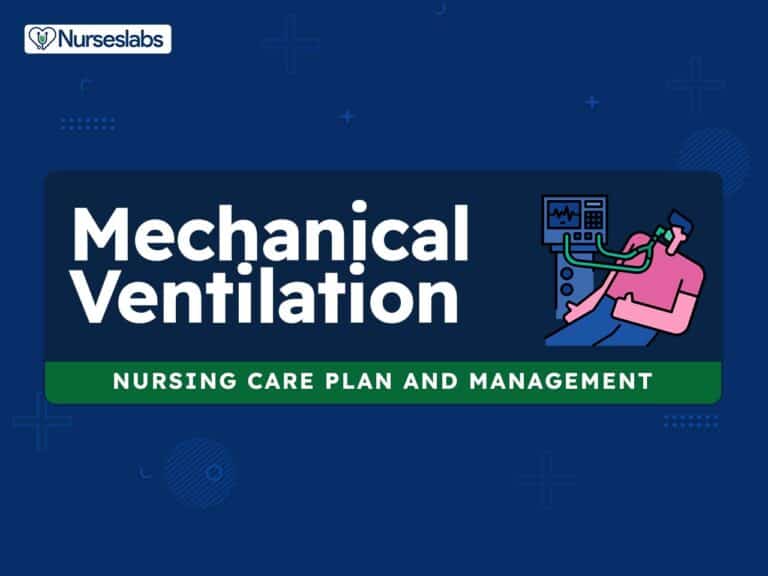

Leave a Comment